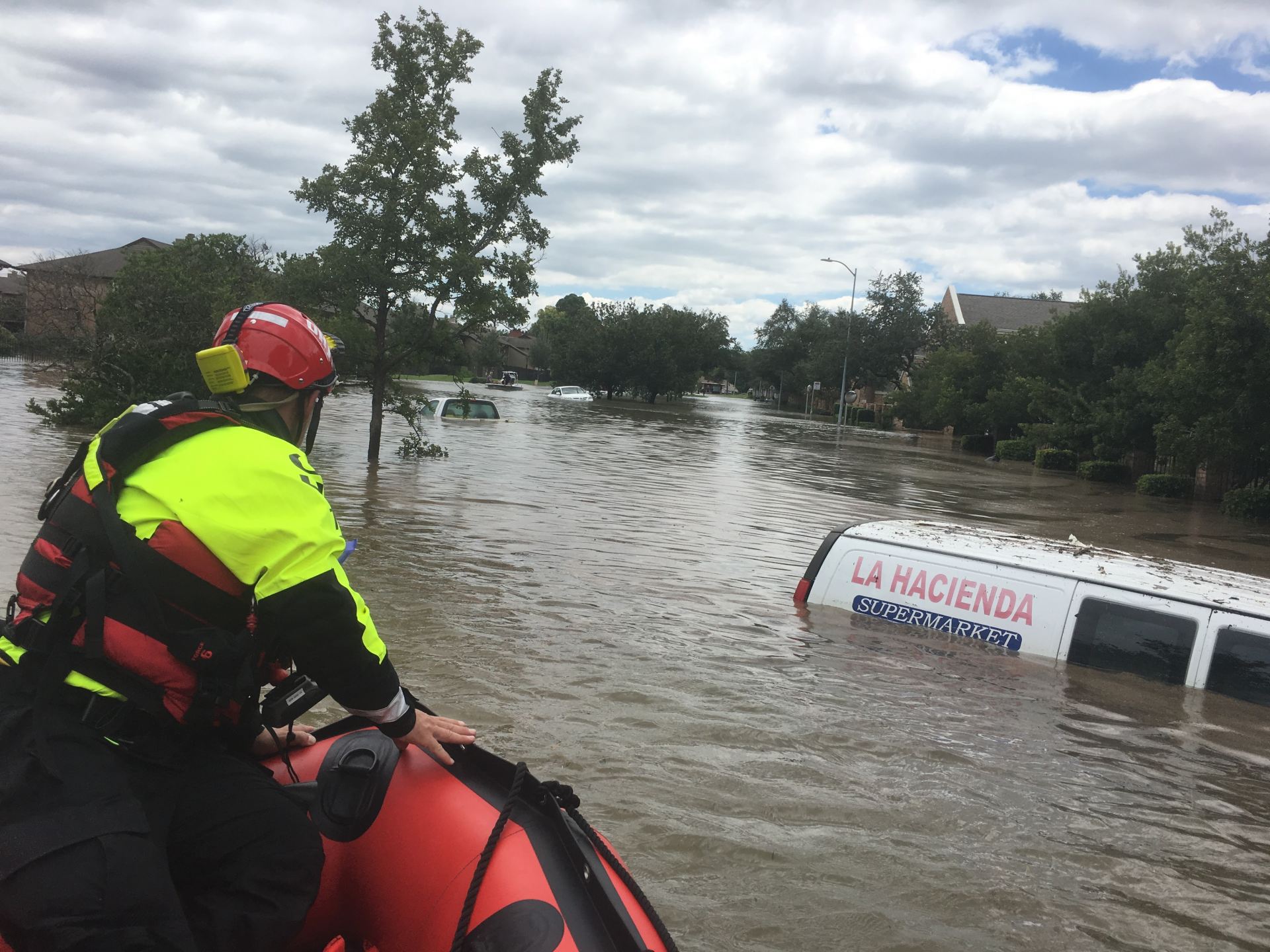
A member of Ohio Task Force 1 aids in the relief effort following Hurricane Harvey. Dr. Nicholas Kman, an emergency medical doctor at Ohio State University’s Wexner Medical Center is also on the task force. Credit: Courtesy of Nick Kman
In the wake of Hurricane Harvey, FEMA deployed Ohio Task Force 1 Aug. 24 to Texas to aid in disaster relief. Keeping the members safe was Nicholas Kman, an Ohio Task Force 1 member and emergency medical doctor at The Wexner Medical Center at The Ohio State University.
Based out of Dayton, the task force is one of the nation’s top 28 urban search-and-rescue teams. Kman was responsible for keeping the other members of the task force healthy during rescue efforts.
For Harvey, Ohio Task Force 1 was activated as a light task force of 49 members, and the team was deployed for 12 days. The task force has around 150 to 200 members who can be deployed to respond to disasters, said Kman.
Over those 12 days, the Houston area received more than 51 inches of rain, causing severe flooding throughout the city and displacing thousands of residents.
“You could actually see the water rising,” Kman said. “We would look at the numbers on a stop sign and try to gauge how fast the water was rising.”
The task force was housed at the Miller Career and Technology Center and L.D. Robinson Pavilion in Katy, Texas, along with 800 citizens, Kman said. They slept 15 to 20 people per classroom.
At times, the water was so high at the Pavilion that the task force could push rescue boats from where the members slept — if they slept.
“It would wake you up at night; the rain was so loud,” Kman said. “The building would roar from all the rain.”
Treating people in a disaster environment is not always the easiest thing to do, Kman said. In the controlled environment of a hospital, supplies and proper help are plentiful. That is far from the case in a hurricane, where relief workers not only contend with the environment but encounter wildlife struggling to survive as well.
“At one point, the water that the rescue teams were working in was 125 times the safe levels of E. coli for a swimming pool,” Kman said. “We also had a lot of fire ant attacks.”
Kman said he did not know the exact number of people Ohio Task Force 1 rescued.
“It is all about trying to help people when they are at their most needy,” Kman said. “People who don’t have anything. People who need all the help they can get.”
Currently, the Southeast is being hit by another hurricane, Irma, especially in Florida. Daniel Bachmann, an emergency medical doctor at the Wexner Medical Center and Ohio Task Force 1 member, is the doctor next in rotation to be sent with the task force.
Bachmann also assisted in relief with Hurricane Matthew in October 2016 and is ready to use that experience to respond to Irma, if need be.
“Each disaster is unique, but the experience definitely does help,” Bachmann said. “You are trying to be the go-to resource for something that may have never happened or only happened a few times, and that’s hard. Responding to Matthew is probably the most helpful thing.”
Ohio Task Force 1 has yet to be activated to respond to Irma.
“I think there is still a good chance that [the task force] may be utilized,” Bachmann said. “Seeing what the extent of the damage is will predicate that.”


